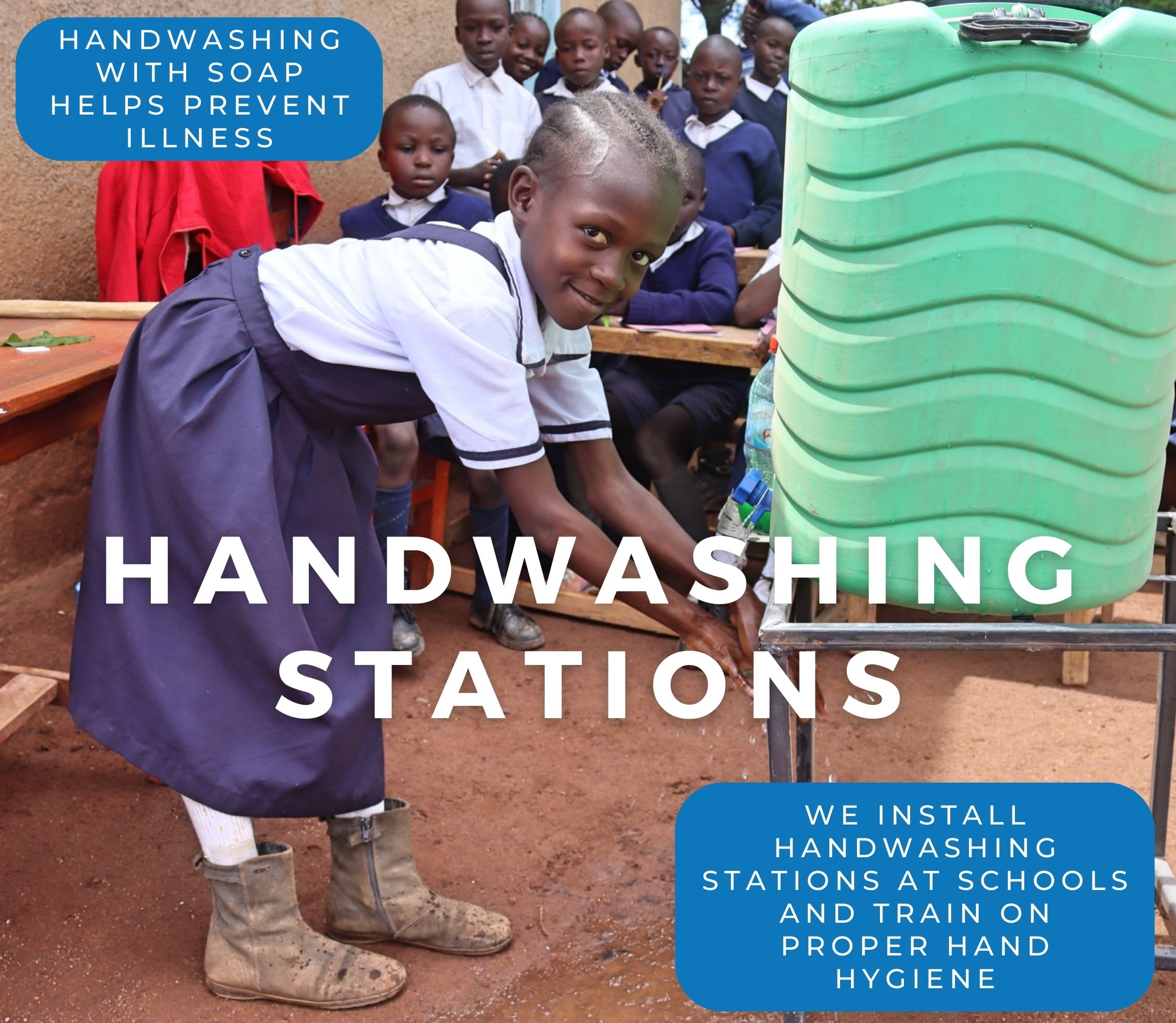The Malap Community Health Center urgently needs a reliable water supply to ensure safe and effective healthcare for those it serves. The three staff members heroically provide care for nearly ninety patients a day, but without access to safe and reliable water, it is a challenging task.
A converted borehole, initially installed by another organization in 1995, was rehabilitated in 2022 and sits just 30 meters from the facility. Still, due to climate change, the water supply is seasonal, and for most of the year, the well is dry, leaving healthcare staff and patients without immediate access to water.
"Climate change causes adverse effects on the converted borehole, and this causes the well to go dry. This leads the staff and community members to access water from a scoop hole. They are walking long distances for water every day, and [it] causes delays in carrying out procedures at the facility," reported Field Officer Alie Kamara.
The scoop hole, the alternate water source, is not only inconvenient but also unsafe, as it is contaminated. The nurses at the center make several exhausting trips per day to collect water for patients, even though they have responsibilities that are neglected when they are away. Worst of all, patients who are seriously ill or need assistance are put at risk both by the medical staff's absence and by consuming contaminated water they worked so hard to collect.
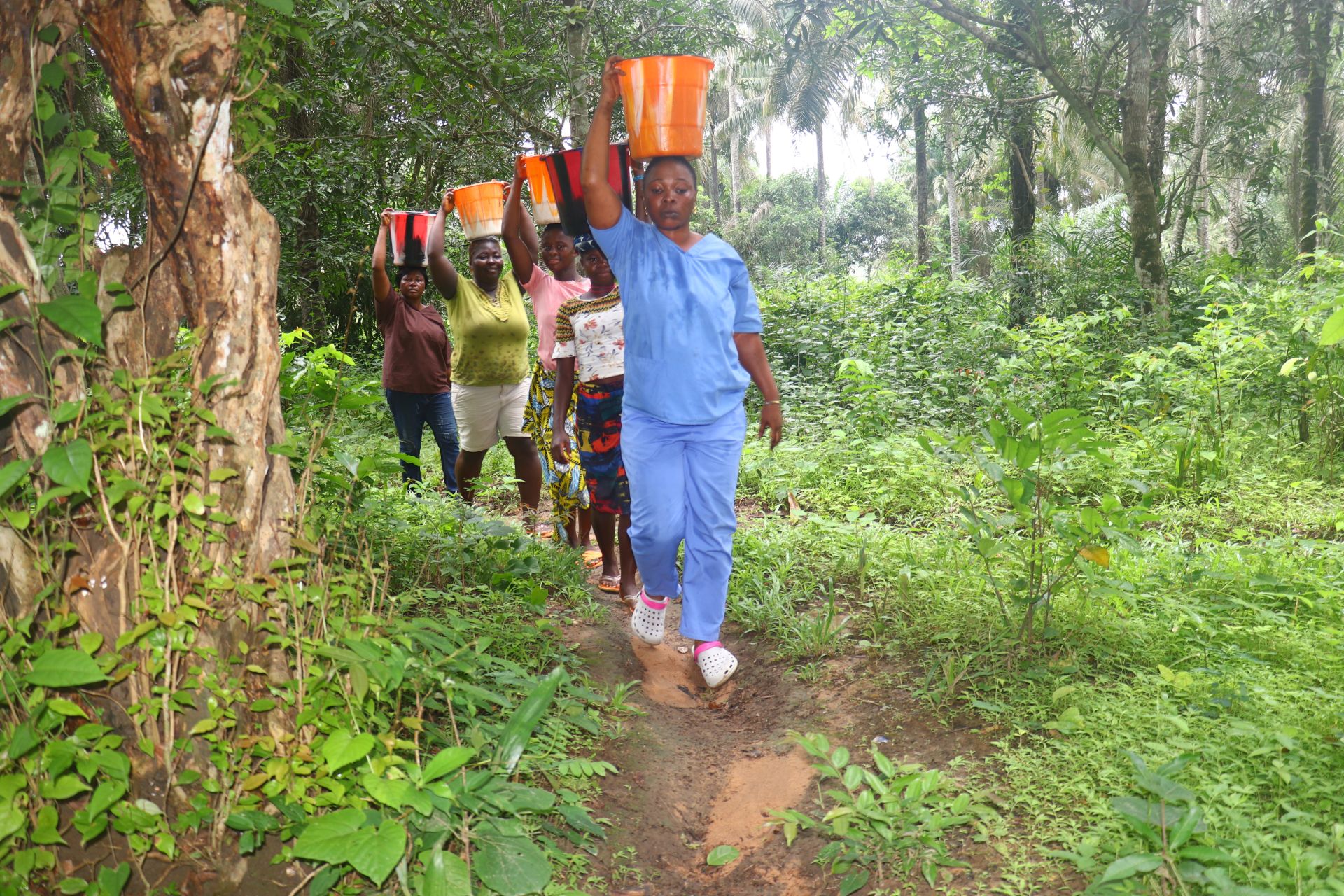
The scarcity of clean water also hinders the staff’s ability to maintain hygiene in critical areas such as the labor room and treatment spaces, putting patients at high risk of infection. The unclean water also increases the risk of waterborne diseases, undermining the very purpose of the health post—to provide care and protection from illness. These conditions not only affect patients but also make life difficult for healthcare workers, who must operate in such a challenging environment.
Nancy Kamara, a 32-year-old nurse at the health center, shared her experience and frustrations.
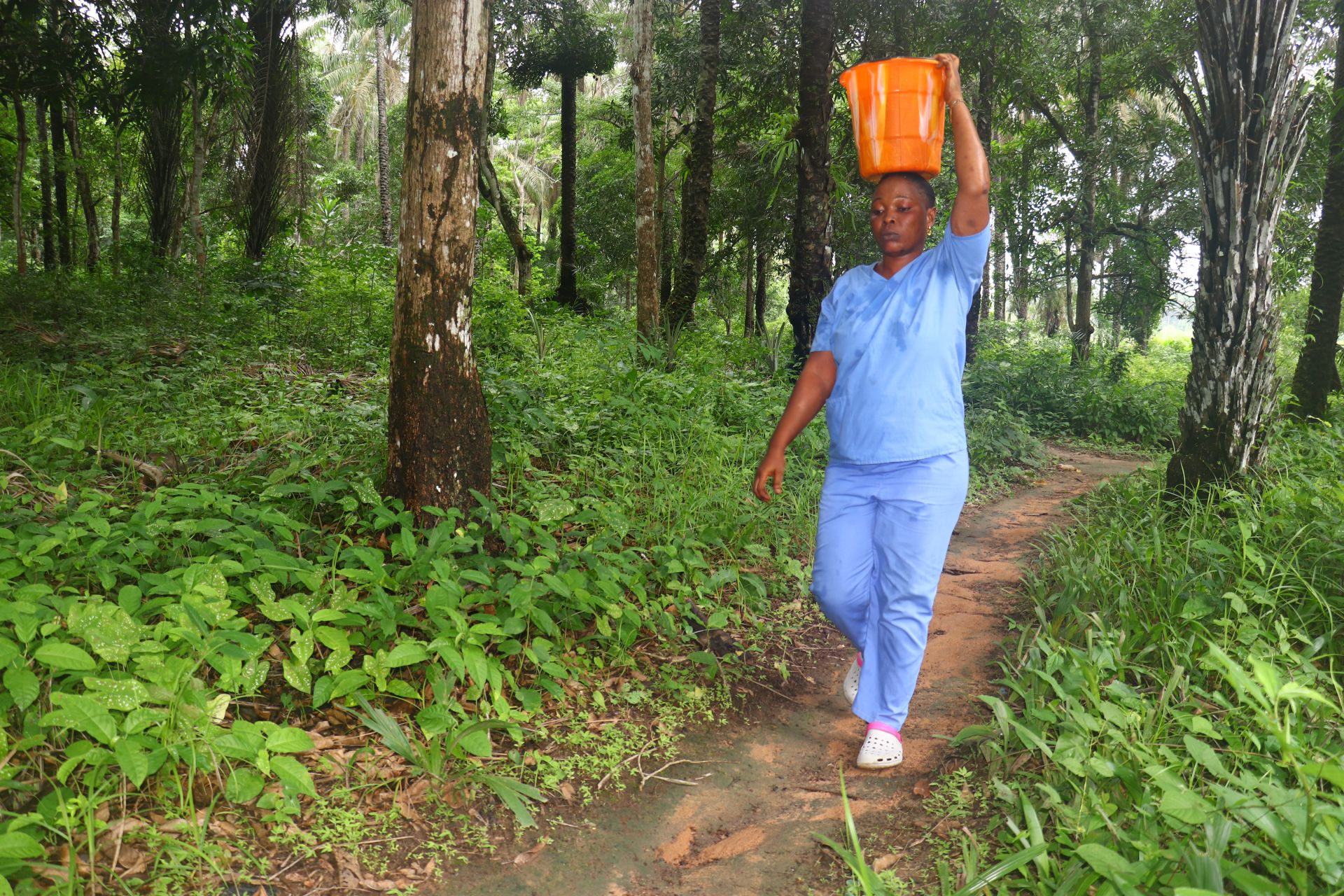
Nurse Kamara carries water.
"I need a lot of time to seek patients' care, [and[ also [to] check the vital signs. If I spend [too] much time collecting water, I [am] not able to carry out my procedures at the facility," Nancy said.
"Water is important to me, and there are plenty of things I use water for. Water helps me greatly to break the chain of disease transmission; handwashing, cleaning [of] the latrines, sterilizing instruments, cleaning wounds, maintaining hygiene, and even my own personal health," she continued.
When the well is dry, medical staff are forced to leave patients or rely on community members or the patients' families to fetch water from a community scoop hole. During emergencies, this often results in dangerous delays, putting people's well-being at risk.
One of the other critical services offered at the healthcare facility is the delivery of babies. Without access to a close, safe water source, it is risky for both mothers and their babies.
"I use water for childbirth, and without safe water, there is [a] high risk during delivery and postpartum infection. If I have [a] delivery at the facility, I will tell the relatives of the women to fetch water," shared Nurse Kamara.
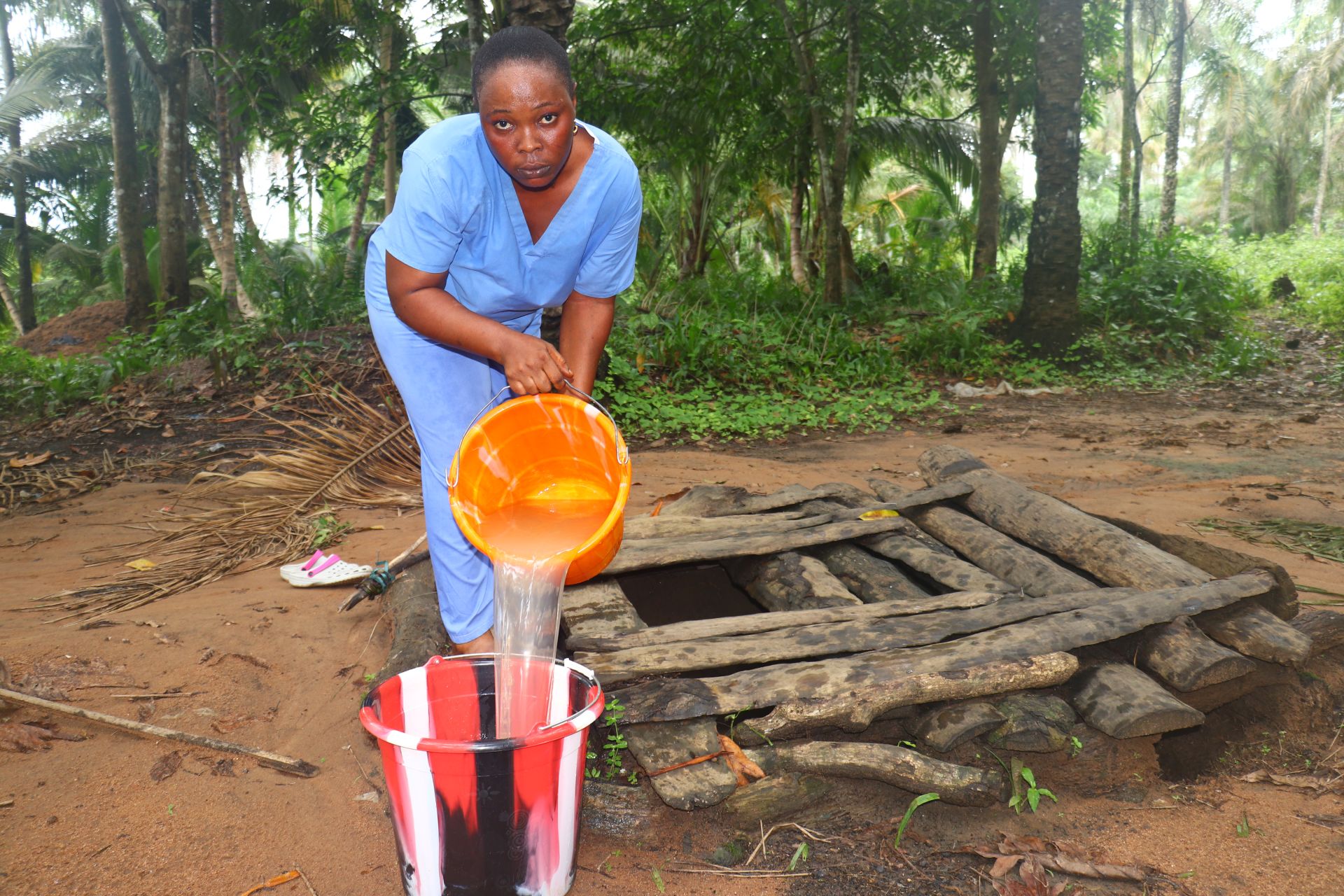
Nurse Kamara collects water from the scoop hole.
"The lack of water in the facility has a lot to do with the patients. When there is no water on the ground or within the facility, I spend minutes/hours fetching water instead of caring for patients. The patients will not come to the facility due to the lack of water," she said.
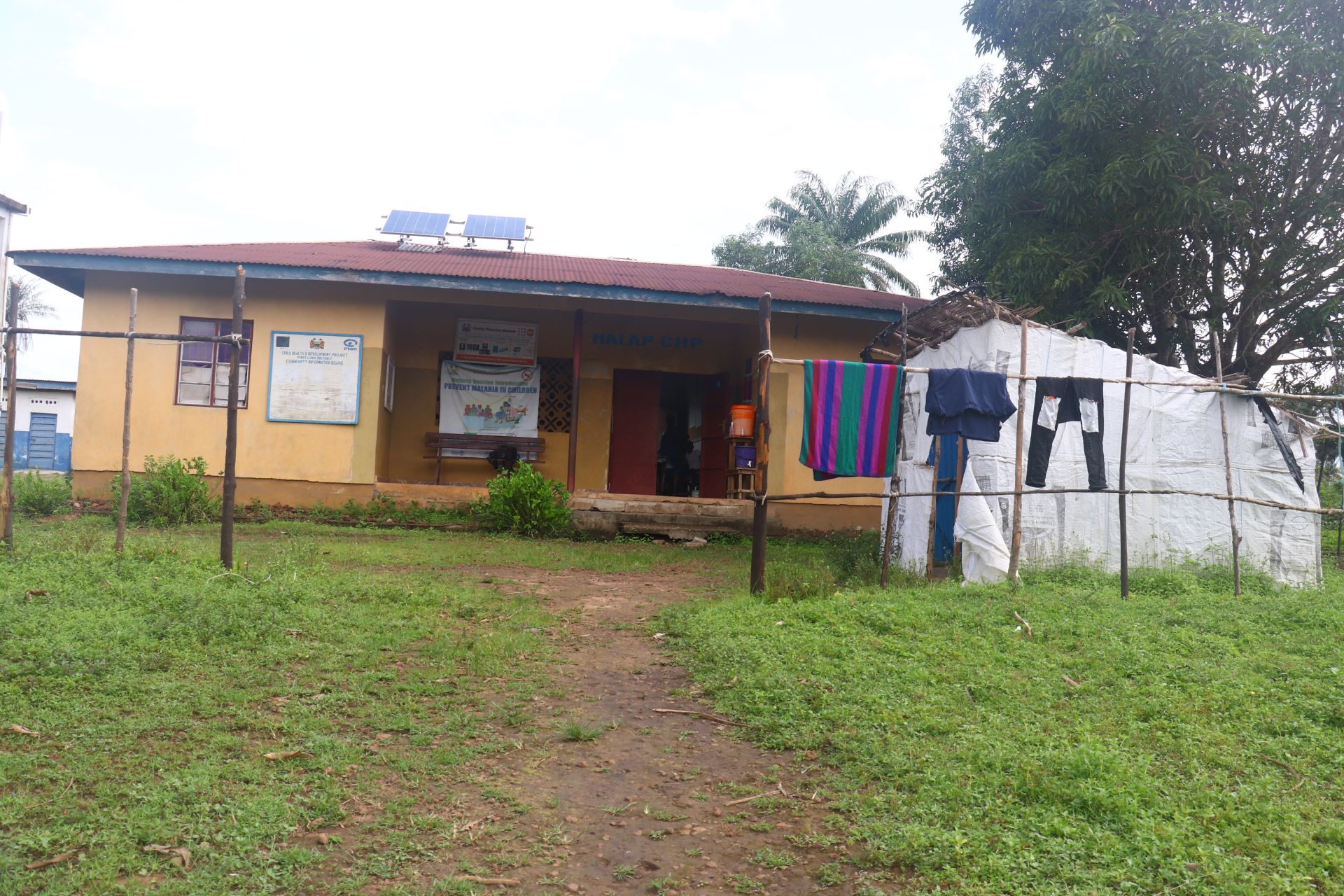
The healthcare center.
A sustainable and clean water source at the Malap Community Health Post would transform the health center. With a dependable borehole, water would be restored for drinking, and staff could maintain proper hygiene, which is crucial for preventing infections. It would also eliminate the need for long trips to fetch unsafe water, freeing up time for healthcare workers to focus on patients. Reliable water access is not just a convenience—it is a foundation for safe, effective, and life-saving healthcare.
Nurse Kamara is hopeful that with clean water, things will change for her and her patients.
"Access to safe water in the facility would transform the patients’ lives. It reduces infection from patients and water [is] essential to sterilize instruments before using [on a] patient. It enables consistent handwashing by patients, visitors, and staff. It prevents the transmission within the facility, and the patients will have water to take oral medication," she concluded.
Steps Toward a Solution
For health care settings, immediate access to a large quantity of clean water is crucial for handwashing, sterilization of equipment, cleaning, and safe childbirth. Water that is off-site creates delays, impacts patient care, and increases the risk of hospital-acquired infections.
Our coverage goals aim for all health centers to have an on-premises water source that will sufficiently serve the patients, healthcare providers, and staff to ensure accessibility, reliability, and safety. With more water available, healthcare workers do not have to ration water, worry about purchasing water with their limited funds, or make tough decisions about when to wash their hands or equipment.
Reliable, clean water ensures that healthcare workers have sufficient water so they can provide excellent patient care!
Our technical experts worked with the health center leadership and the local community to identify the most effective solution to their water crisis. They decided to drill a borehole well, construct a platform for the well, and attach a hand pump.
In tandem with this project, a submersible solar pump will also be installed to provide piped water throughout the center for drinking and hand washing, as well as to supply water to a community kiosk.
Well
Abundant water often lies just beneath our feet. Aquifers—natural underground rivers—flow through layers of sediment and rock, offering a constant supply of safe water. A borehole well is drilled deep into the earth to access this naturally filtered and protected water. We penetrate meters, sometimes even hundreds of meters, of soil, silt, rock, and more to reach the water underground. Once found, we construct a platform for the well and attach a hand pump. The community gains a safe, enclosed water source capable of providing approximately five gallons of water per minute. Learn more here!
Handwashing Stations
Alongside each water source, we install two gravity-fed handwashing stations, enabling everyone at the health center to wash their hands. Handwashing is crucial for preventing water-related illnesses within the health center and community. Health center staff will maintain the stations, fill them with water, and supply them with soap, which we often teach them how to make.
Latrines
We ensure there are Ventilated Improved Pit (VIP) latrine blocks that effectively prevent the transmission of fecal diseases. Each latrine will boast a durable cement floor for easy use and maintenance. We’ll ensure at least one stall is reserved for staff, along with gender-separated toilets that include menstrual hygiene facilities and accessible options for individuals with limited mobility.
Health Care Staff and Community Education & Ownership
Hygiene and sanitation training are integral to our water projects. Training is tailored to each community's specific needs and includes key topics such as proper water handling, improved hygiene practices, disease transmission prevention, and care of the new water point. Safe water and improved hygiene habits foster a healthier future for everyone in the community.
Encouraged and supported by our team's guidance, the health center staff elects a water user committee representative of its diverse members. This committee assumes responsibility for maintaining the water point, organizing community efforts, and gathering fees to ensure its upkeep.
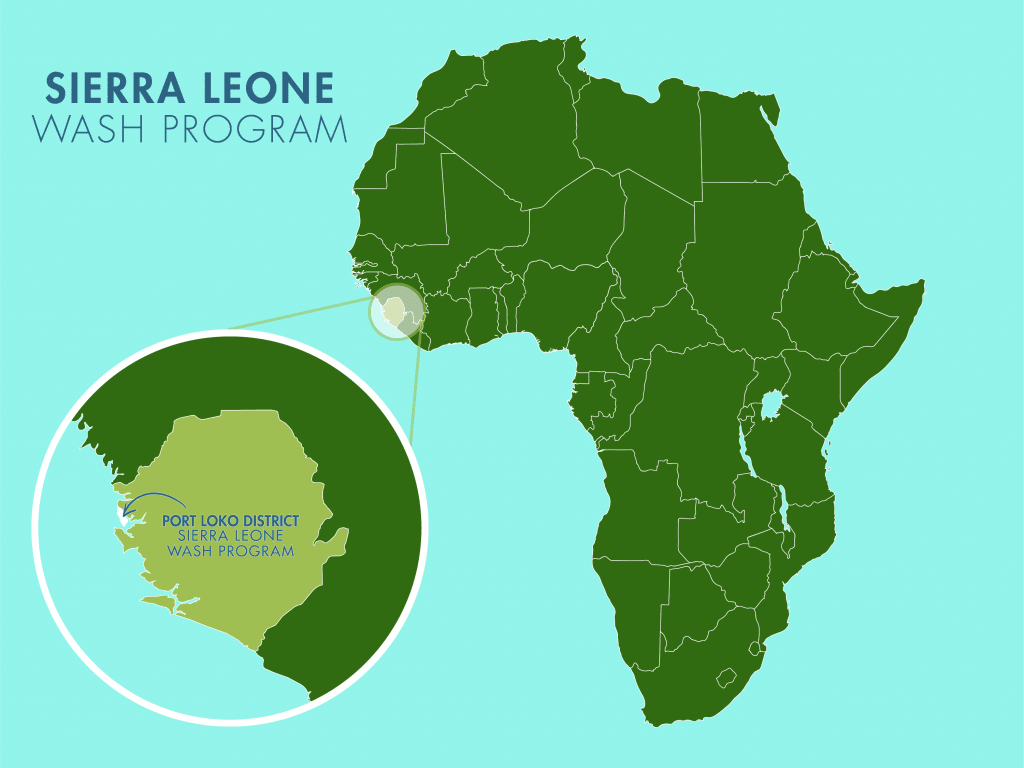
 Borehole Well and Hand Pump
Borehole Well and Hand Pump
 Rehabilitation Project
Rehabilitation Project





